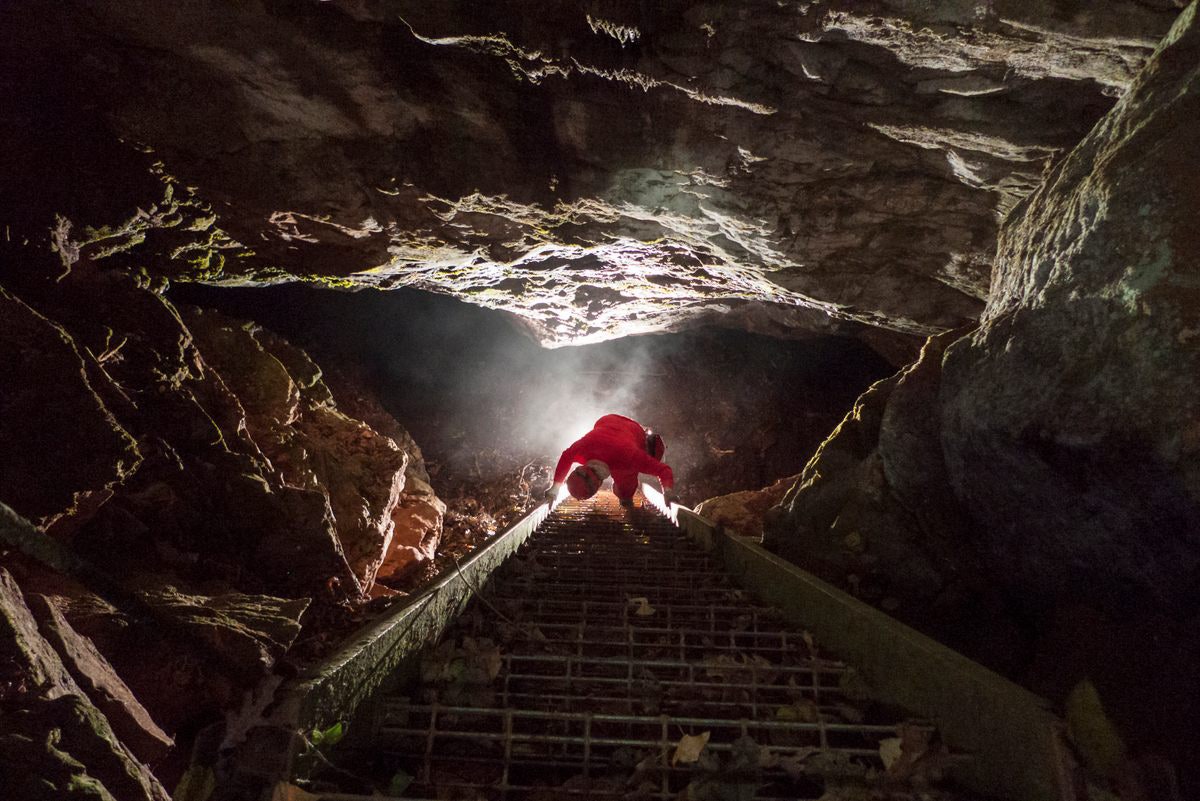Historically, Shelta Cave was one of the most diverse cave systems in the eastern United States. Long before Niemiller and other scientists came along, beetles, salamanders, shrimp, crayfish, and other animals lived out their days in the dark. Often blind and lacking pigmentation, many cave-dwelling species live longer than their surface-dwelling relatives, thanks to slower metabolisms—a common evolutionary adaptation to subterranean life. For example, the red swamp crayfish, the unfortunate star of many a Louisiana crawfish boil, can live up to five years in the swamps and ditches they call home. Shelta’s southern cave crayfish, O. australis, lives up to 22 years, and it’s thought that the Shelta Cave crayfish has a similar lifespan.
A colony of gray bats also made Shelta Cave their home. Small enough to fit in the palm of your hand, these adorable, furry “microbats” deposited guano throughout the cave—a valuable food source for many of the other cave critters, including the Shelta Cave crayfish. For centuries, the balanced ecosystem of bats, crayfish, and other Shelta Cave animals carried on, undisturbed.
Then entrepreneur Henry M. Fuller came along. In 1888, Fuller bought the cave, naming it after his daughter, according to Scott Shaw, who manages the Shelta Cave Nature Preserve. A year later, Fuller built a wooden dance floor and installed some of the city’s first electric lights in the cavern, creating a popular entertainment destination. When rainwater swelled the subterranean lakes, Fuller even operated wooden boat tours for visitors. Nicknaming the cave “the eighth wonder of the world,” Fuller ran ads that boasted, “all the discoveries of the old world pale into insignificance in comparison to this greatest sight on earth or under the earth.” “Yeah, it was a big affair,” says Shaw—but it was not meant to last.
After 1896, Shelta changed hands several times, reportedly even becoming a speakeasy during Prohibition. In 1967, the National Speleological Society (NSS), an organization that studies and protects caves, bought the cave to preserve its unique ecosystem.
A 30-foot ladder descends into the yawning mouth of Shelta Cave.COURTESY AMATA HINKLE



